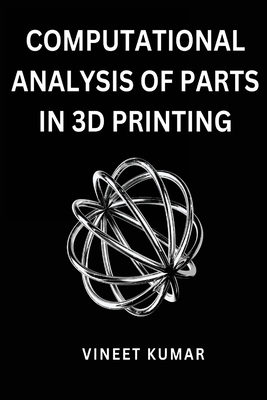You are here
Back to topComputational Analysis of Parts in 3D Printing (Paperback)
Email or call for price
Description
Today the need for products and its consumptions rate are accelerating the technological
as well as economic competition between the manufacturing organisations and
customers. At present, every customer requires customised and low-cost product. Day by
day the increasing competition between companies is forcing manufacturing groups to
develop new technologies to improve their manufacturing processes. These new
technologies improve product quality and reduce product cycle time to fulfil the customer
demand. Every organisation's priority is to fulfil the customer's needs at the right time
for its survival.
Today the increased use of social media constantly changes the society's taste from time
to time which dramatically impacts the traditional industry. Due to market competition,
every manufacturing organisation changes their strategy according to current trends,
feedback and customer reviews to meet the customer's demand.
Every customer needs customised product at a low cost with the best quality in short lead
time. Today, every organisation is shifting towards new technology. The computer
technology customises the product using 3D CAD modelling software in shorter time.
The traditional manufacturing processes have geometrical limitations. The geometrical
limitations are eliminated by new technologies like rapid prototyping, which play a vital
role to meet customer demands.
Today, Additive Manufacturing Technology has widely spread in aerospace, defence,
dental, prostheses, implants, etc. The consumer industry like sports, furniture and
jewellery are aware of the advantages and significant role for their businesses in future.
Rapid Prototyping Processes can be defined as the technique in which any geometry can
be printed using 2D section by adding a thin section, layer by layer on top of each other
in the limited printed area with specified input conditions. On completion of the building
process, it is taken out from printed area, and post-processing operations are conducted to
remove unwanted material or support structure from the base. In post processing after
removing support structure, pin holes, cracks and void are filled by some bonding
material for strengthening the part.
